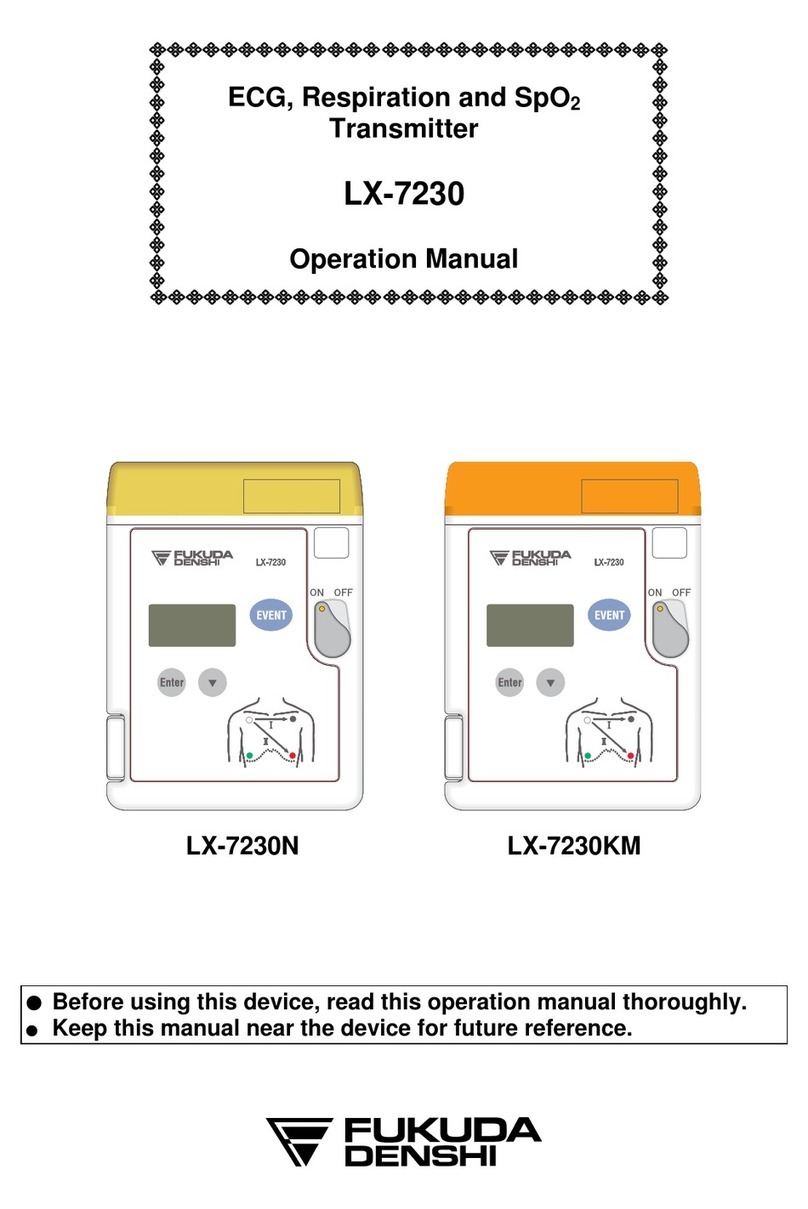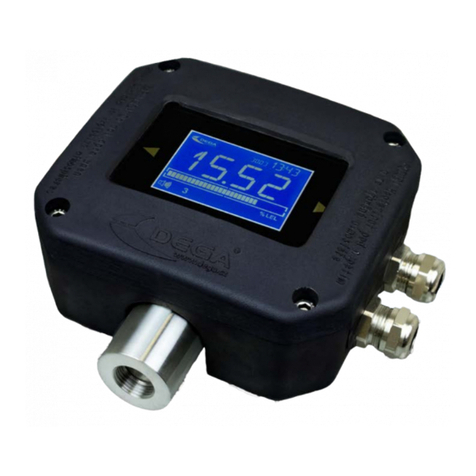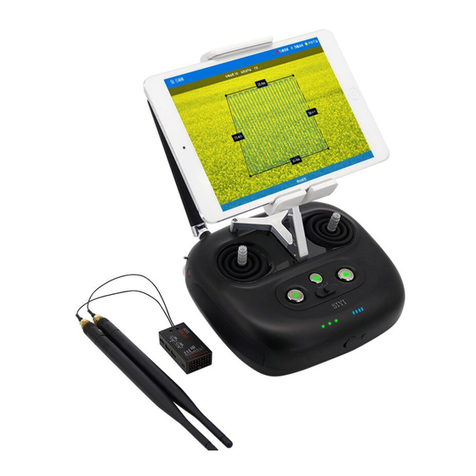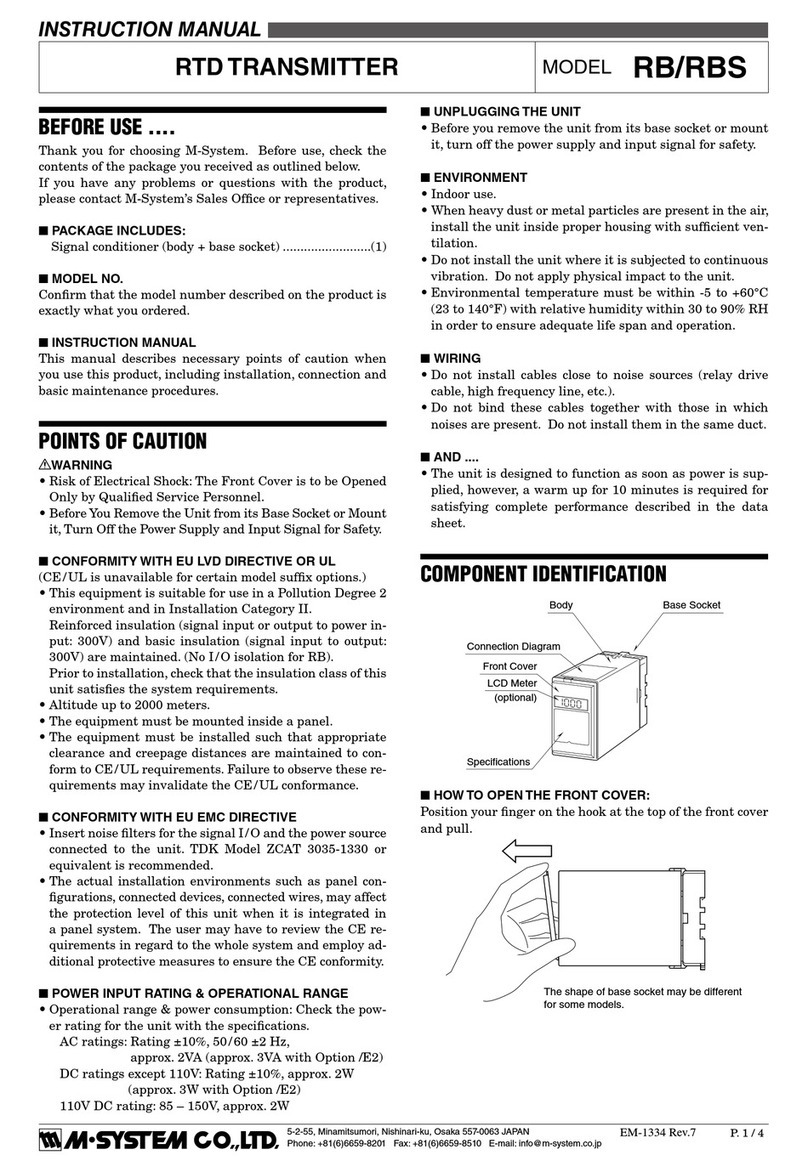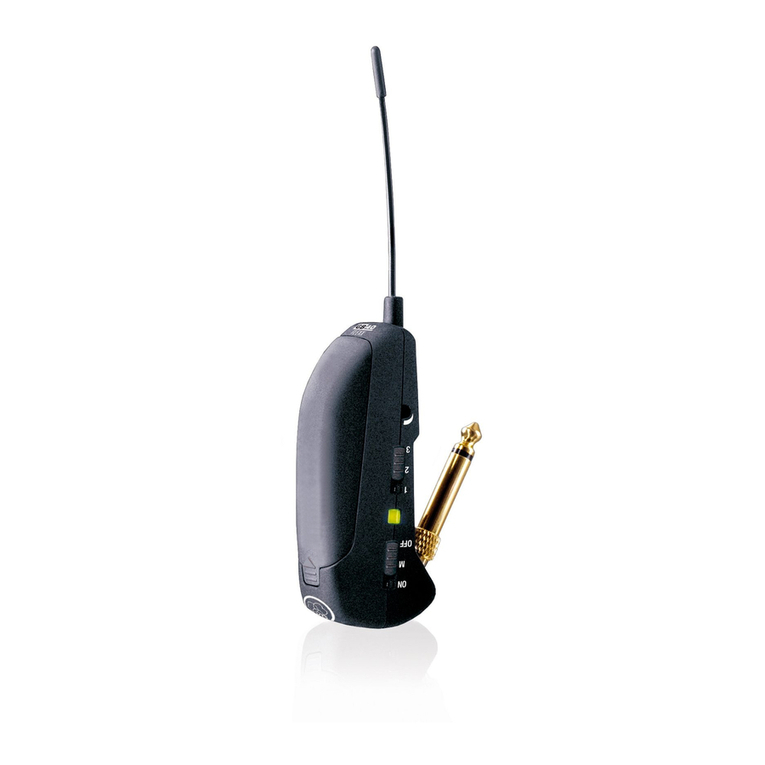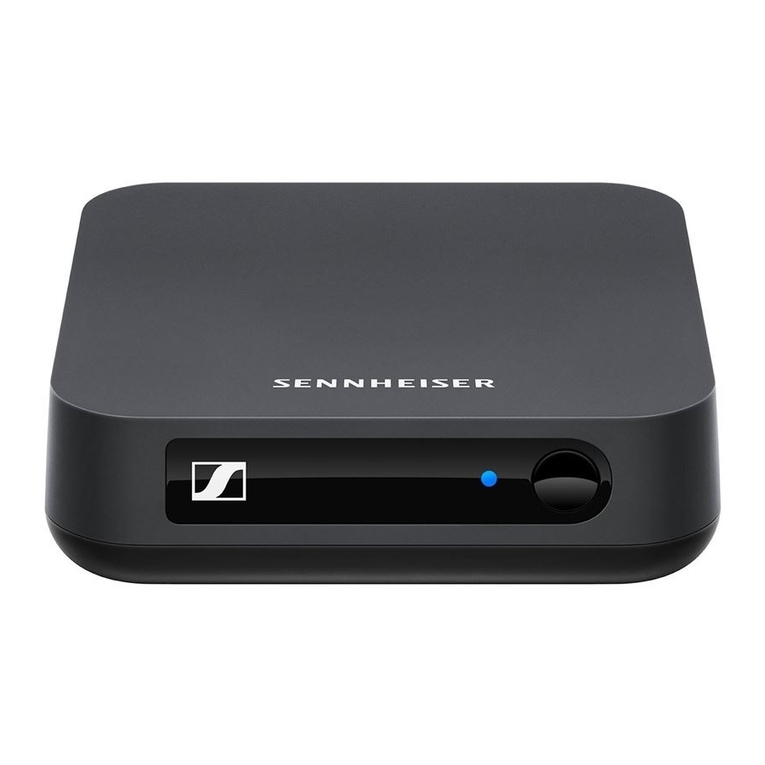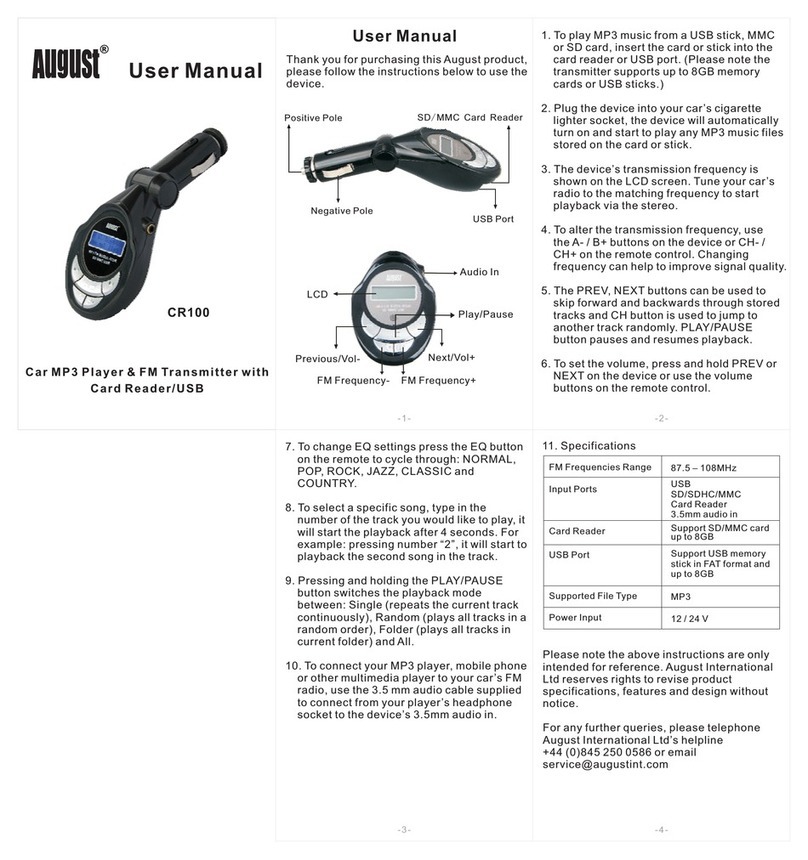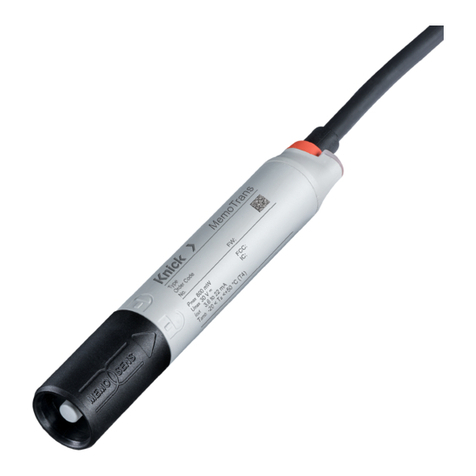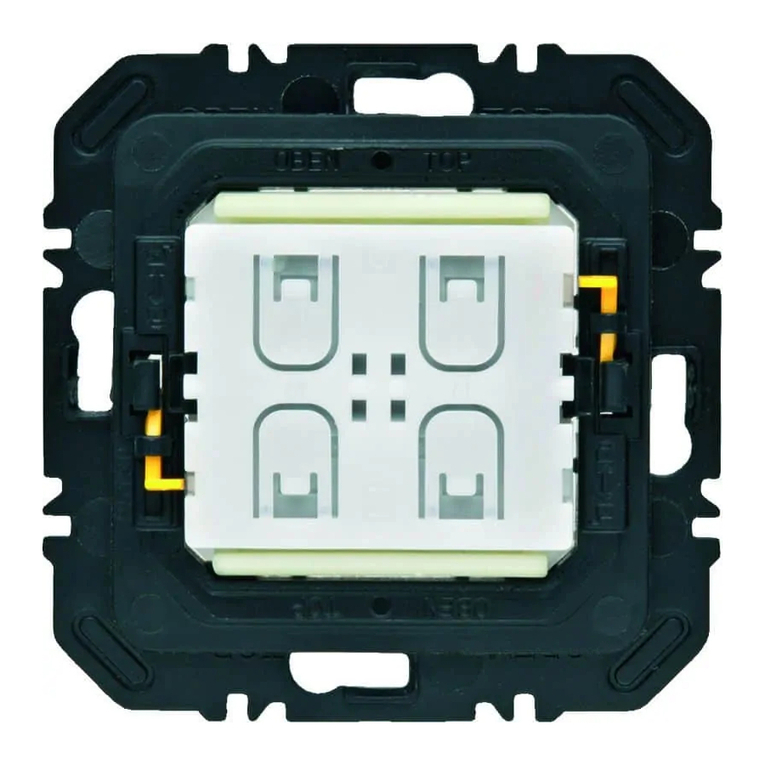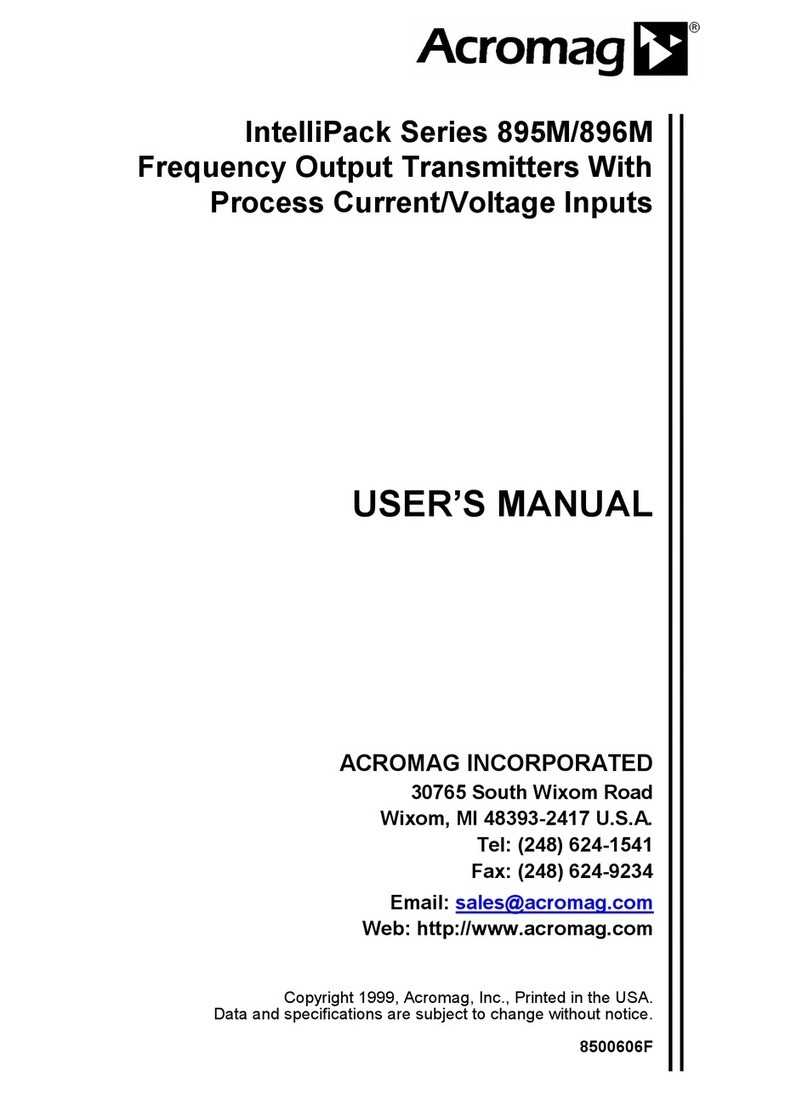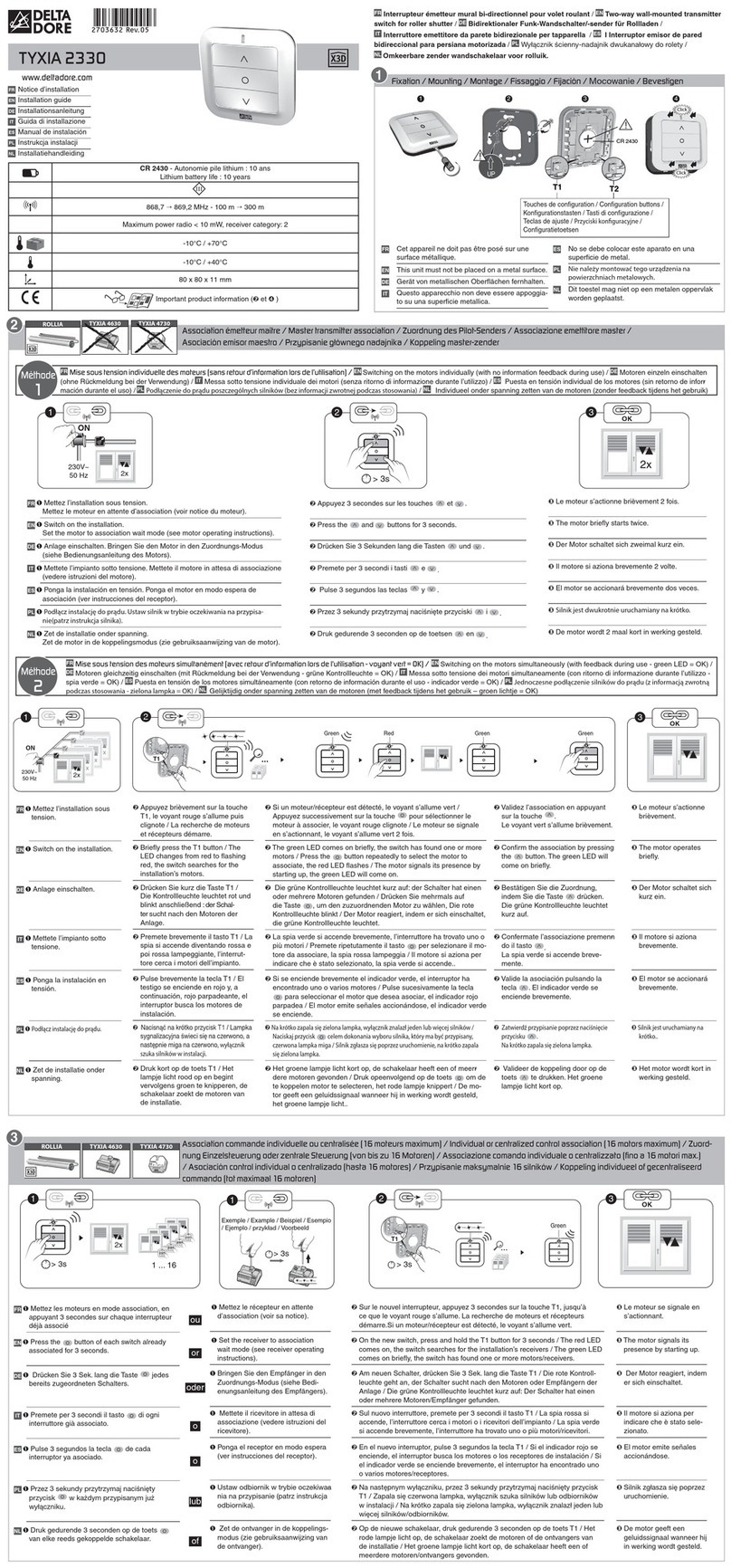TAS TAS-Link III User manual

English Edition 3.7.1 | 19.07.2019
© TAS GmbH & Co. KG 2019

2
General advice
Security advice
To create a safe work environment it is necessary to stick to all the given security advice and instructions at any
time. Furthermore, all existing local accident prevention regulations and safety regulations for the application area
of the device have to be satisfied.
All the material used may only be applied in a proper way according to their purpose.
Servicing
Servicing has to take place according to the guideline VDE 0833. For details see the chapter servicing.
Disposal
The device is subject to the WEEEguideline (EU 2002/69/EG). You are legally bound tosendthedeviceaftercom-
pleting its durability separate from the household waste to the disposal of your local municipality.
ESD advice
Attention, there are charge endangeredcomponents onthe assemblygroup! Installationworkingsat thedeviceare
only to be executed with switched off operating voltage. Before and during the installation workings it has to be se-
cured that the working person is earthed to avoid possible damages at the device.
Used symbols
The information sign shows useful information and gives away advice and recommenda-
tions.
Attention“!
The attention sign hints at very important information and instructions which can lead to
very high costs, material or even personal damage in case of contravention.
ATTENTION!
Please refer to the handbook for further information! You will find this on the suppliedCD,in
the configuration tool “SysConf” among “help”→”handbook” or as a download file among
www.taslink.de.
Weiterführende Informationen entnehmen Sie bittedem Handbuch!DiesesfindenSieaufder
mitgelieferten CD, im Konfigurations-Tool „SysConf“ unter „Hilfe““Handbuch“ oder zum
Download unter www.taslink.de.

3
Table of contents
1Overview alarm transmission device TAS-Link III.....................................................................................5
1.1 Introduction.............................................................................................................................................5
1.2 Transmission paths/modules/modes/protocols ......................................................................................5
1.3 Extension modules .................................................................................................................................5
1.4 Path modules..........................................................................................................................................6
1.5 Housing...................................................................................................................................................6
1.6 Power supply units..................................................................................................................................7
1.7 Batteries..................................................................................................................................................7
2Scope of delivery..........................................................................................................................................8
2.1 TAS-Link III in the housing......................................................................................................................8
2.2 Accessory ...............................................................................................................................................8
3Assembly.................................................................................................................................................... 10
3.1 Housing................................................................................................................................................ 10
3.2 Mains connection................................................................................................................................. 12
3.3 Attachment of path, DSL and extension modules ............................................................................... 13
4Hardware..................................................................................................................................................... 15
4.1 Overview basic assembly group TLW 1+............................................................................................ 15
4.2Measurements..................................................................................................................................... 16
4.3 Status LEDs TLW 1+ (basic assembly group)..................................................................................... 17
4.4 Inputs on basic assembly group.......................................................................................................... 18
4.5 Switching outputs on the basic assembly group.................................................................................. 19
4.6 TTA 1 (4 LED)...................................................................................................................................... 20
4.7 DSL 1 (DSL modem) ........................................................................................................................... 21
4.8 XDS 2 (carrier assembly group SL1)................................................................................................... 22
4.9 TEG 1 (GSM/GPRS)............................................................................................................................ 23
4.10 TEG 2 (GSM/GPRS)............................................................................................................................ 24
4.11 TEU 1 UMTS router (GPRS/UMTS).................................................................................................... 25
4.12 Operation modes TEU 1...................................................................................................................... 26
4.13 PMU 2 (power supply TEU 1).............................................................................................................. 26
4.14 TEA 1 (PSTN)...................................................................................................................................... 27
4.15 TEI 1 (ISDN) ........................................................................................................................................ 28
4.16 XKT 1 (line extension) ......................................................................................................................... 29
4.17 XBT 1 (fire alarm extension)................................................................................................................ 30
4.18 XRT 1 (relay extension)....................................................................................................................... 32

4
4.19 TXX 1 (carrier assembly group)........................................................................................................... 33
4.20 Power supply unit NT560-12/E............................................................................................................ 34
5Software...................................................................................................................................................... 35
5.1 Installation............................................................................................................................................ 35
5.2 General................................................................................................................................................ 35
6Commissioning.......................................................................................................................................... 36
6.1 General................................................................................................................................................ 36
6.2 Commissioning ISDN/PSTN at NGN connections............................................................................... 36
6.3 Commissioning of radio transmissions (GSM, GPRS, UMTS)............................................................ 37
7Servicing/maintenance.............................................................................................................................. 38
8Technical data............................................................................................................................................ 39
8.1 Basic assembly group TLW 1+............................................................................................................ 39
8.2 Path and extension modules ............................................................................................................... 39
8.3 Accessory ............................................................................................................................................ 40
8.4 System housings ................................................................................................................................. 40
8.5 Power supply ....................................................................................................................................... 41
8.6 Approvals/standards............................................................................................................................ 41
8.7 Copyright and License Information...................................................................................................... 42

5
1 Overview alarm transmission device TAS-Link III
1.1 Introduction
Thank you for choosing the alarm transmission device TAS-Link III. The TAS-Link III is based on the assembly
group TLW 1+. Thanks to its intelligent modular setup the TAS-Link III transmission device (TD) can be put to-
gether/modified for every purpose of application individually.
By applying numerous path modules the transmission paths can be enhanced with the GPRS, UMTS,GSM,PSTN
or ISDN path if necessary. Additionally, an own DSL modem with emergency power supply is available for the IP
path.
On top of that, 3 extension modules are available which are able to expand the functionality arbitrarily. Here it can
be selected between a fire alarm module (XBT 1), for the activation of TF/MDL main fire detectors or directly to the
fire alarm centre, a line extension module (XKT 1), for the activation of 8 additional inputs and2 outputs,and arelay
module (XRT 1). All in all it is possible to apply up to 15 extension modules per TD in arbitrary combinations.
1.2 Transmission paths/modules/modes/protocols
Currently, the TAS-Link III supports the transmission paths, transmission modes and protocols displayed in the
table below:
Trns.-
Path
ARC
Voice
SMS
E-Mail
ARC Transmission Protocols
Path module
IP
1
VdS 2465-S2 (un-/encrypted)
VdS SecurIP
TLW 1+
GSM
2
VdS2465
TEG 1/2
GPRS
1
VdS 2465-S2 (un-/encrypted)
VdS SecurIP
TEG 1/2 or TEU 1
UMTS
1
VdS 2465-S2 (un-/encrypted)
VdS SecurIP
HC25 / PH8-P /
PLS8-E / TEU1
PSTN
3
4
VdS 2465, Telim
TEA 1
ISDN
3
4
VdS 2465, Telim
TEI 1
1.3 Extension modules
1.3.1 00-25-9700000 fire alarm module - XBT 1
Direct activation of a main fire detector (diode (MDL) or frequency detector (TF))
Direct activation to a fire alarm centre via a/b (independent from the manufacturer)
Monitoring contact (different functions are supported)
Malfunction contact
2x remote switching relays
1.3.2 00-25-9000000 line extension module - XKT 1
8 inputs
2 outputs
1.3.3 00-25-9800000 relay module - XRT 1
8 outputs
1Currently only unencrypted mail transfer possible
2CSD service for GSM network required.
3Does not work with NGN-connections.
4SMS Server required (recommended: "AnnyWay" www.sms-im-festnetz.de).

6
1.4 Path modules
Path module
Path of transmis-
sion
Art. no.
TEG 1 w/o antenna
GSM/GPRS
00-25-0100000
TEG 2 w/o antenna
GSM/GPRS
00-27-0100000
TEU 1 w/o antenna
GPRS/UMTS
00-25-0060000
TEA 1
PSTN (analogue)
00-25-0030000
TEI 1
ISDN
00-25-0010000
1.5 Housing
The alarm transmission device TAS-Link III can be used, as you already got to know insection1.1,veryflexiblydue
to its modular setup. So the requirements concerning housings, power supply units and batteries are correspond-
ingly diverse.
1.5.1 System housing
All hardware components are located in system housings.Depending on the equipment asmallerora biggerhous-
ing is necessary. Standard housings are the G4 and the G4+ housings. As standard, the basic assembly group
TLW1+ incl.path and extension modules as well as the power supply unit and thebatteryarelocated inthe housing
(except G2).
G2 G4 G4+ G6 G8
TAS art. no.
Housing
LEDs
Measurements (w x
h x d)
Weight
RAL
00-12-5005000
G2
-
145 x 240 x 100mm
1,1kg
9016
00-16-0001100
G4
1
310 x 275 x 115mm
4kg
9016
00-16-000A400
G4+
4
310 x 275 x 135mm
5kg
9016
On request
G6
4
480 x 460 x 110mm
8kg
9016
On request
G8
4
500 x 610 x 208mm
15kg
9016

7
TAS art. no.
Accessory system housing G4
G4
G4+
G6
G8
00-12-5999001
Area conservation for system housing G4
00-12-5999901
Tear-off detector for system housing G4
1.5.2 Bottom-mounted housing
If an external DSL router should be used, it has to be built over in accordance with the standards. To do so, the
system housings g4 and G4+ can be expanded with a bottom-mounted housing.
TAS art. no.
Housing
Measurements (w x
h x d)
Weight
RAL
00-12-5993730
Bottom-mounted
housing G4
310 x 275 x 115mm
4kg
9016
1.6 Power supply units
Depending on the housing and the case of application different power supply units are used.
TAS art. no.
Power supply
unit
Amou
nt
bat-
teries
Battery
capacity
Max.
output cur-
rent
in accor-
dance with
standard
G4
G4+
G6
G8
17-50N1400005
C-Tec NT 560-
12/E
1
≤12Ah
2A
EN 54-4,
EN 50131-1
17-50N1400004
Telenot NT
7500
1
≤12Ah
0,65A
VdS class C
43-01-1001019
ABI 15011
2
≤2x
24Ah
2A
EN 50131-1
1.7 Batteries
Depending on the housing and the case of application different batteries are used.
TAS art. no.
Capacity
Measurements (w x
d x h)
Weight
G4
G4+
G6
G8
17-62-3122650
7,2Ah
65 x 93 x 150mm
2,2kg
17-62-3123120
12Ah
97 x 93 x 150mm
4kg
17-62-3123162
18Ah
75 x 165 x 180mm
6,4kg

8
2 Scope of delivery
2.1 TAS-Link III in the housing
As already described in the previous chapter the system of the TD TAS-Link III consists of diverse components
which can be delivered in the widest variety of combinations.
Therefore, the standard configuration is to be described here, namely TLW1+ as well as TEG 1 (e.g. for IP/GPRS)
in the system housing G4+ with 4 LEDs in the housing cover as well as C-Tec NT 560-12/E power supply unit and
7,2Ah battery.
2.2 Accessory
Attention!
Please note that the scope of delivery of the accessory can be different depending on the type of
the TAS-Link! This short instruction only describes the standard scope of delivery.
The following belongs to the standard accessory:
1x TAS-Link III short instruction 99-28-9990100 (you will find the complete handbook on CD)
1x drilling template 08-50-6005015
1x CD (software can be downloaded as well via www.taslink.de)
1x standard accessories kit 00-12-5004006 (see the description of its content below!)
2x patch cable 3m (blue for IP / yellow for ISDN)
1x battery (optional)

9
2.2.1 Content of the standard accessories kit 00-12-5004006
Content
Description
8x 10kΩresistor 5% / ¼ W
Terminating resistors 10kΩfor the lines
3x dowel S 8x40
Dowels for the fixing screws
2x screw 5x60
Fixing screws for the housing (bottom)
1x screw 5x50
Fixing screw for the housing (top)
6x cable tie 150mm
Strain relief for the supply cables
1x type plate
Type designation, serial no. etc.
1x sticker MAC address
Sticker showing the MAC address of the device
1x cable clamp 10mm
Cable clamp for 230V supply cable
1x jumper
Jumper for C-Tec NT560-12/E (is not required)
1x distance bolt M3x45mm
Mounting for the battery
2x cable clamp 5mm
Cable clamps for the earthing of the insulating shell/earthing wire of
supply cables at the housing
2x ratchet screw M3x6
Fixing screws for the cable clamps
1x adhesive seal 11mm
Seal for the housing
1x lock washer 4,3mm inside
Lock washer for M4x8 screw
1x ferrite
Ferrite for 230V supply cable (only required at C-Tec)
1x oval-head screw M4x8
Screw for the cable clamp 10mm
1x drilling template G4
Drilling template for the G4/+ housing

10
3 Assembly
3.1 Housing
For a safe assembly, fix the respective housing at the intended positions with the help of the supplied screw and
dowels. Use the supplied drilling template (08-50-6005015), to place the drills comfortably and correctly. Please
install the housing only in the specified direction!
3.1.1 G2
3.1.2 G4/G4+
115mm G4
135mm G4+

11
3.1.3 G6
3.1.4 G8

12
3.2 Mains connection
3.2.1 General important advice
Please read the following important advice carefully before starting with the assembly works:
The mains connection must only be made by electrically certified and trained personnel!
All assembly works have to be executed without operating and battery voltage!
Discharge yourself before the beginning of the assembly works by touching earthed metal parts to avoid
damages at semiconductor devices by electrostatic discharge (ESD)!
All power supply units may only be connected with a protective conductor connection (PE)!
The mains cable has to be secured at the terminal clamps by a strain relief!
All in the system housing incoming reporting cables have to be earthed via the housing!
Disconnect device : a disconnect device including a 5A protection should be installed in the electricalcabi-
net in order to disconnect the equipment from the mains supply (e.g. for maintenance purpose…). Please
note that this disconnect device should have a contact separation of at least 3mm,andprovide with differn-
tiel protection of 30mA.
3.2.2 Power supply unit C-Tec NT 560-12/E
Installation cable
For a correct installation of the 230 V AC mains cable the sheated cable types NYM-J 3x1,5 or 2,5 have to be
used.
Cable de-
scription
Wires
Cross sec-
tion
in mm² Cu
Hedge
in A
NYM-J
3
1,5
10
NYM-J
3
2,5
16
Please pay attention that the stripped ends are placed correctly and safelyin thedesignated terminalblock!
Therefore, strip the ends ca. 8mm.
Device fuses
Fuse
Trigger char-
acteristic
Nominal
current
in A
Breaking
capacity
Nominal voltage
in V
Mains 230V
T
1
H
250
Battery 12V
F
3,15
H
250

13
3.3 Attachment of path, DSL and extension modules
3.3.1 Path modules
3.3.1.1 Table of compatibility
Compatible to
TEA 1 PSTN
TEI 1 ISDN
TEG 1/2 GSM
TEU 1 UMTS
E1
E2
The two white 30-pole slots on the TLW1+ are called E1 and E2.
Plugging of the TEA/TEI on TWL (E1) Plugging of the TEG 1/2 on TLW (E2)
Plugging of the TEU on TWL (E1) Plugging of the TEU on TLW (E2)
Please do never plug/pul and/or address path modulesand/or other plug-in
cards, if voltage is apllied!

14
3.3.2 DSL module
The DSL module, consisting of DSL1 as well as XDS2, is attached to the backside of the TLW1+ by 3x M3x5
screws incl. lock washers as well as 3x M3x5 distance bolts incl. lock washers. Afterwards, the voltage from the
TLW1+ to the XDS2 as well as the interface X1 to XDS2 and the LAN port 0 to DSL1 have to be wired.
3.3.3 Extension modules
3.3.3.1 Attachment of XKT 1, XRT 1 and XBT 1 on the TLW 1+
Ethernet
X1 to XDS2
Voltage
Please do never plug/pull and/or address path modules and/or other plug-
in-cards, if voltage is applied!

15
4 Hardware
4.1 Overview basic assembly group TLW 1+
Number
Designation
Function
01
+
Power supply 10-30V (at 12V: 80mA for TLW 1 / 45mA for TLW 1-1)
01
GND
0V
02
IN1-8
Inputs/lines
03
SUM
Sum fault port –break contact (max. 30V/100mA)
04
NQ
Negative acknowledgement –break contact (max. 30V/100mA)
05
OUT1
Switching output 1 –normally open contact (max. 30V/100mA)
06
OUT2
Switching output 2 –normally open contact (max. 30V/100mA)
07
R
Without function
08
SV NO
Voltage monitoring for NT 7500, ABI/Esser & NT560-12/E
09
-
Reset button
10
PSU
Voltage monitoring only for NT560-12/E
11
-
Status LEDs for transmission device (see status LEDs)
12
-
Service bushing for parameterisation (USB 2.0)
13
-
Status LED for service bushing
14
-
LAN bushing 1
15
-
LAN bushing 0
16
X2
V.24 interface (in conjunction with XVT3) for AS components/ remote access inter-
face
17
X1
V.24 interface for external extension cards/AS/remote access interface
18
-
Earthing bracket
19
X7
Ribbon cable connector for the external LED module (TTA/LMT)
20
-
Status LED for the path modules (UMTS)
21
E1
Slot for the path modules TEI 1 (ISDN), TEA 1 (PSTN) or TEU (GPRS/UMTS)
22
E2
Slot for the path modules TEG 1 (GSM/GPRS) or TEU (GPRS/UMTS)
23
X6
I²C interface for the ABI AS
24
X3-X5
UART interface for extension modules (XKT/XBT/XRT)
25
J1
Voltage supply via I²C (set) or external (not set)

16
4.2 Measurements
4.2.1 TLW 1+
4.2.2 Path modules and extension cards

17
4.3 Status LEDs TLW 1+ (basic assembly group)
4.3.1 Status TLW
The status LEDs of the TLW describes describe various states, starting with the dis-
play of malfunctions up to reports which are lined up or are transmitted at the moment.
LED
Off
Statically on
Flashes slowly
Flashes quickly
Pulse
Green
defective/
currentless
Operation
Servicing
Transmission
Remote connec-
tion
Yellow
No malfunction
Energy malfunc-
tion
Malfunction trans.
device/sabotage
-
Configuration
not correct
Red
No report
Report lined up
Connection estab-
lished
Alarm transmitted
4.3.2 Status USB
4.3.3 Status LAN
Colour
Flashing rhythm
Meaning
Green
Off
defective/currentless
On
Connection to PC active
Colour
Flashing rhythm
Meaning
Green
Off
defective/currentless/deactive
On
Link Up
Flashing
Data exchange
Yellow
Off
defective/currentless/deactive
On
100 MBit/s mode
Flashing
-
Colour
Flashing rhythm
Meaning
Green
Off
defective/currentless/deactive
On
Connection to path module
(UMTS)

18
4.4 Inputs on basic assembly group
Short circuit line (contact)
Here a report is triggered by opening the short circuit line.
10kΩ /2k7Ω
This means that a report is triggered by a change of resistance of +/- 40%. Hereby a 10kΩ/2k7Ω resistor has to be
inserted at the assignment at the detector.
Sabotage monitored
Idle state 10 kΩ +/-40%;
Triggering state 2k7 Ω +/-40%;
Sabotage state all resistance values out of the defined area.
Advice!
All the reporting cables incoming in the system housing have to be earthed via the housing.

19
4.5 Switching outputs on the basic assembly group
4.5.1 OUT1/2
These switching outputs serve for the switching of a signal e.g. as a remote effect signal or as switching function at
the line release. The outputs are potential-free with optocouplers. Here the polarity has to be considered!
4.5.2 SUM
The sum fault port is potential-free with bidirectional optocouplers. In the idle state it is connected through. I fit is
released, e.g. by a voltage malfunction, path malfunction etc. (can be configured) it is opened.
4.5.3 Negative acknowledgement
4.5.3.1.1 Negative
This output is closed in idle state (≤1kΩ). If a report cannot be transmitted for a period of time of 240 seconds, the
output is opened for ≥1 second (≥500kΩ). The acknowledgment output is potential-free with optocouplers.
4.5.3.1.2 Positive
This output is closed in idle state. The output „negative acknowledgement can display the function „positive ac-
knowledgement if configured. If a report is transmitted, the output is opened for ca. 1 second.
ATTENTION!
Do not charge the potential-free optorelays with more than 100mA at 30V.

20
4.6 TTA 1 (4 LED)
The TTA 1 is a display module which shows the current state of the TAS-Link III at the outside of the housing. Ithas
to be activated separately in the configuration.
View housing cover G4+
Number
Function
01
Status LED red
02
Status LED yellow 2
03
Status LED yellow 1
04
Status LED green
05
Ribbon cable connection for control of the TTA 1
06
Button for the LED test
4.6.1 Status-LEDs
LED
Off
Statically on
Flashing
Green
Device/LED
defective/off
Operation/idle state
Servicing 1
Yellow 1
No malfunction
Malfunction
path/system/transm.
extens. module/sabotage
Yellow 2
No malfunction
Malfunction mains *
Malfunction battery
Red
No report in queue
Report lined up/silent alarm *
Report acknowledged
1Meldungen haben Priorität
Table of contents
